The Freshmen 15
Top 48 dynasty rookie rankings
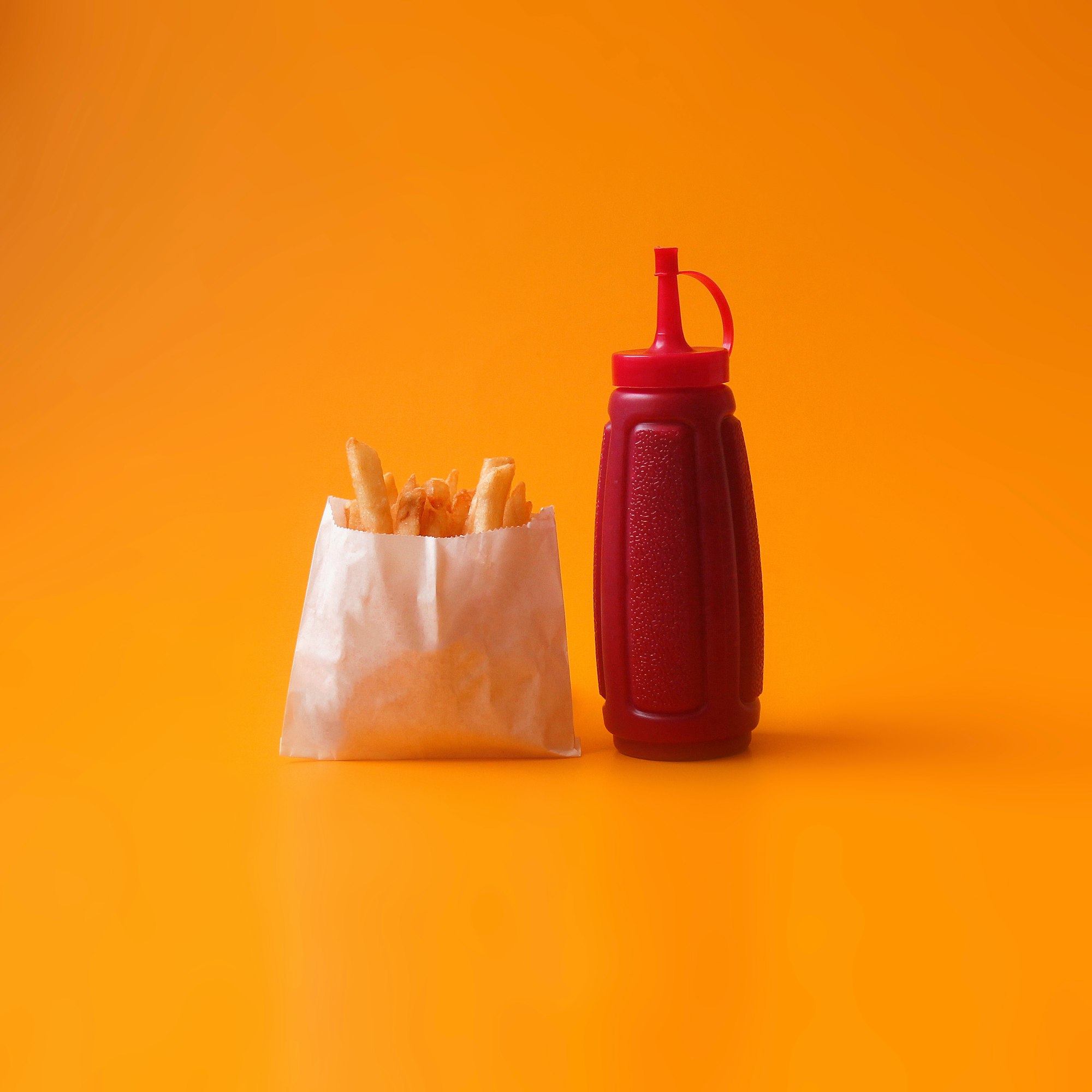
During the first semester of my freshman year at the College of Charleston, my suite mates and I decided to see if one of us could take down two Burger King Quad Stackers.
A hearty 1620 calories and 106 grams of fat later, my buddy Ryan was technically victorious, but really, we all lost a bit of ourselves that day.
I transferred to West Virginia University for my second semester and our dorm was next to a Little Caesars and, of course, another Burger King, which is where the drunk bus would drop us off after a late night on High Street.
Chances are high we had already smashed the Up All Night breakfast spread at the student center: scrambled eggs, bacon, biscuits and gravy—all free!—then hopped on the bus still hungry for a $5 Hot & Ready pizza or a BK Italian Original (or both).
And chances are even higher that if had been a Penny Pitchers night at Shooter's Lounge, then I may have snuck out to Jimmy John's to get a Gargantuan, ate half of it on the way back to the bar, jammed it in my pocket, then periodically chomped it down while slamming pitchers with my fellow bandits.
WVU wasn't ranked the top party school in the nation for nothing, folks.
So let's indulge in a little freshmen 15.

Below, you'll find my dynasty rookie rankings across various scoring settings and popular strategies. After that, I lay out a buffet freshmen who deserve a little more ink than the Bijan Robinsons and Bryce Youngs of the draft.
Dynasty Rookie Draft Rankings
Nine different scoring settings and strategies to choose from!
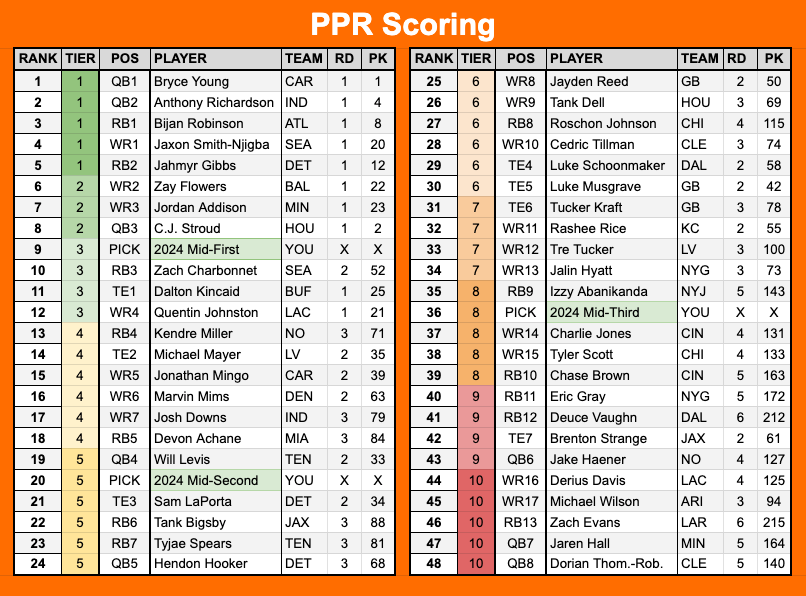
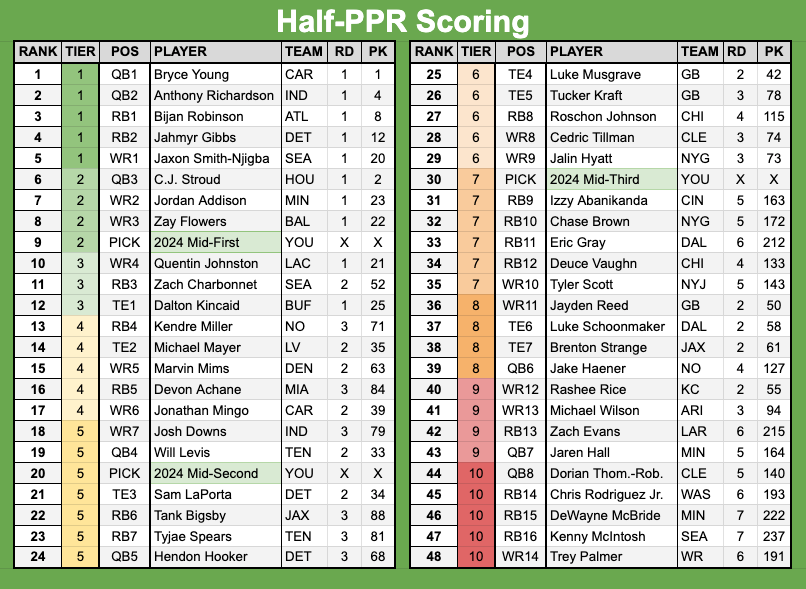
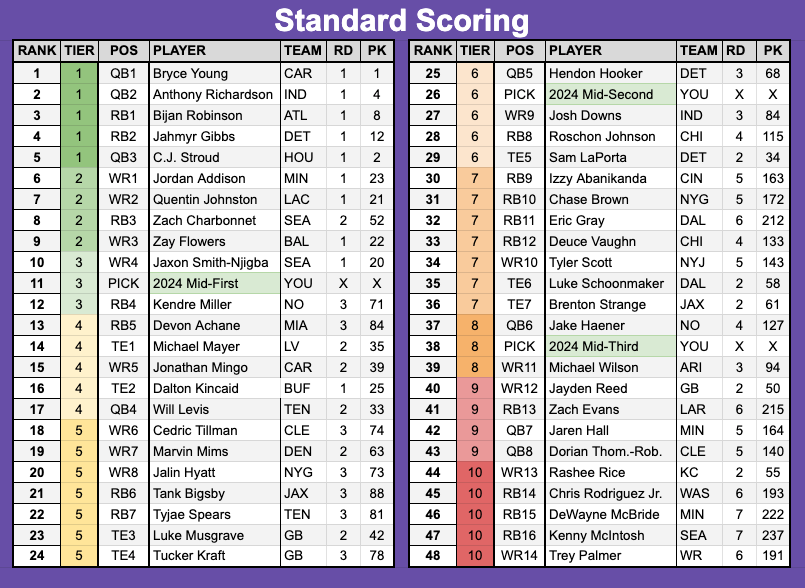
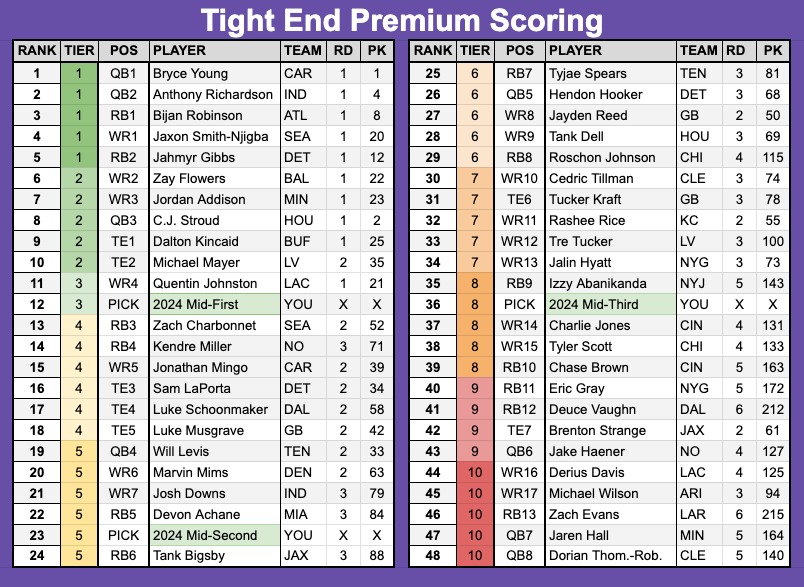
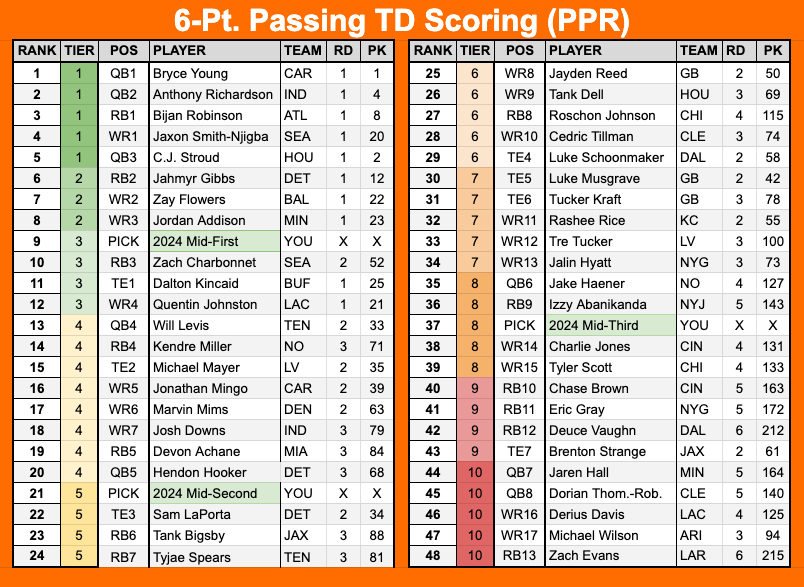
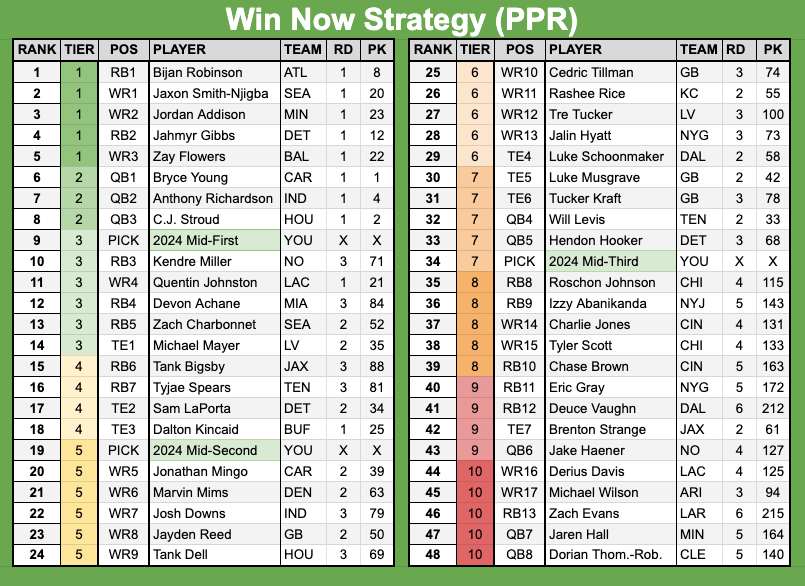
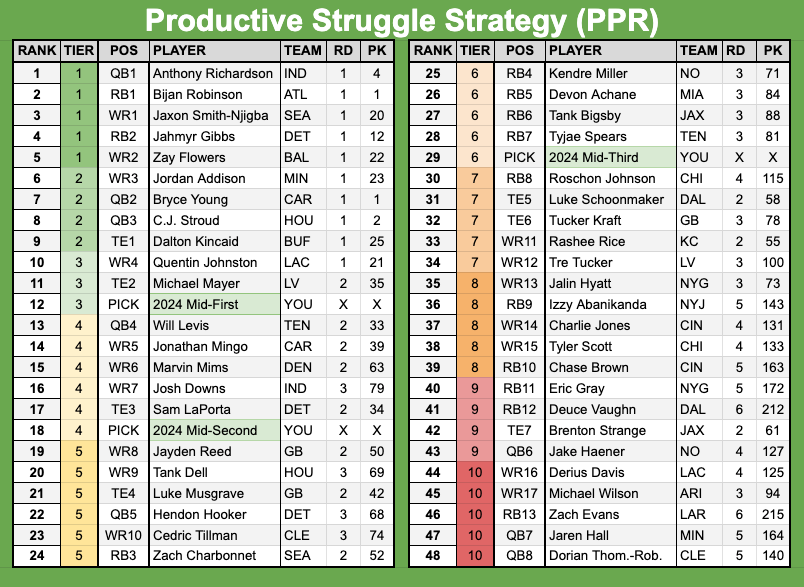
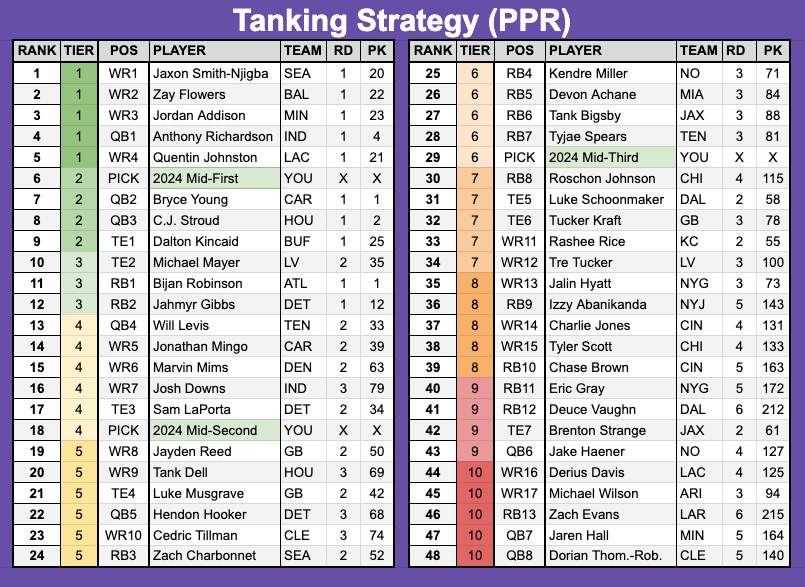
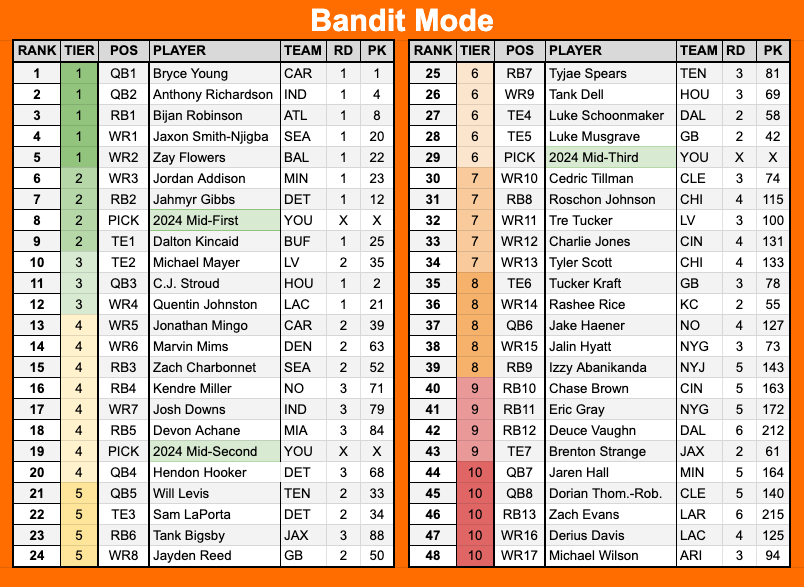
These rankings are geared toward superflex.
If you only have to start one quarterback each week, consider Bryce Young as high as the 1.01—yes, seriously!—and as low as the 1.06, behind only Bijan Robinson, Jaxon Smith-Njigba, Jahmyr Gibbs, Jordan Addison, and Zay Flowers.
Ditto for Anthony Richardson in single QB leagues: draft him as high as the 1.01 and as low as the 1.06 or 1.07, depending on how you feel about Bryce Young. I'd consider C.J. Stroud in the 2nd and Will Levis in the 3rd; Hendon Hooker, Jake Haener, and/or Dorian Thompson-Robinson in the 4th.
In general, based on the past decade or so, my superflex rankings skew toward Top 100 NFL Draft picks. There are exceptions. The pass-happy NFL has elevated wide receivers in the pecking order and pushed fantasy-relevant running backs past the Top 100 picks.
Here's how I'm attacking upcoming rookie drafts. (I'll try to add a little nuance and context before getting into the freshmen, below.)
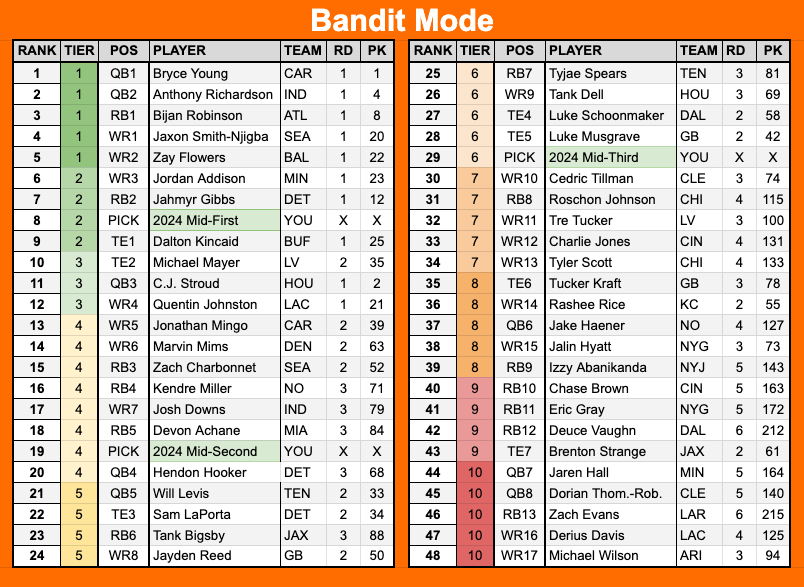
The consensus 1.01 in most rookie formats remains Bijan Robinson. Although I would prefer to draft Bryce Young or Anthony Richardson to most teams picking first overall, it's hard to bet against Robinson in Arthur Smith's offense, particularly when the Falcons took him in the Top 10.

If you have the superflex rookie 1.01, though, and you didn't trade into that selection, chances are high that your team is in need of some serious help, and you're likely projected to finish near the bottom of the standings. Selecting a potential franchise QB makes more sense, at least in the longterm, than taking the consensus RB1 in the draft class. That doesn't mean you have to take a quarterback with your 1.01. Instead, try and trade back with the 1.02, 1.03, or 1.04 if somebody really wants Bijan.
Around the middle of the draft, Jaxon Smith-Njigba and Jahmyr Gibbs are typically ranked at five and six, fairly interchangeably. In most superflex scoring formats, I think you should take JSN, Zay Flowers, or Jordan Addison over Gibbs, unless you're "a running back away from competing." Here's why:
- The Ravens have a new offensive coordinator (Todd Monken) who has a proven history of passing at a much higher rate than previous OC Greg Roman. Zay Flowers finds himself on the same contract timeline as his new quarterback, Lamar Jackson, who was rightfully made the highest-paid player in NFL history.
Todd Monken's offenses in the NFL:
— Jake (@Parry_FF) April 30, 2023
2019 Browns: 539 pass attempts
2018 Buccs: 625 pass attempts
2017 Buccs: 605 pass attempts
2016 Buccs: 578 pass attempts
The Ravens under Greg Roman:
2022: 488 Pass attempts
2021: 611 Pass Attempts
2020: 406 pass attempts
2019: 440 pass…
- Jordan Addison, on the other hand, gets the privilege of working opposite the best wide receiver in the universe in Justin Jefferson. Even with Kirk Cousins in the final year of his contract, the Kevin O'Connell-led Vikings seemed to generate enough goodwill in their first season to earn a few more operating a modern offense—a fantasy-friendly scheme that prioritizes passing on early downs and practically force-feeds the ball to its best offensive players.
- As for Gibbs and JSN? I'll get to them in a second.
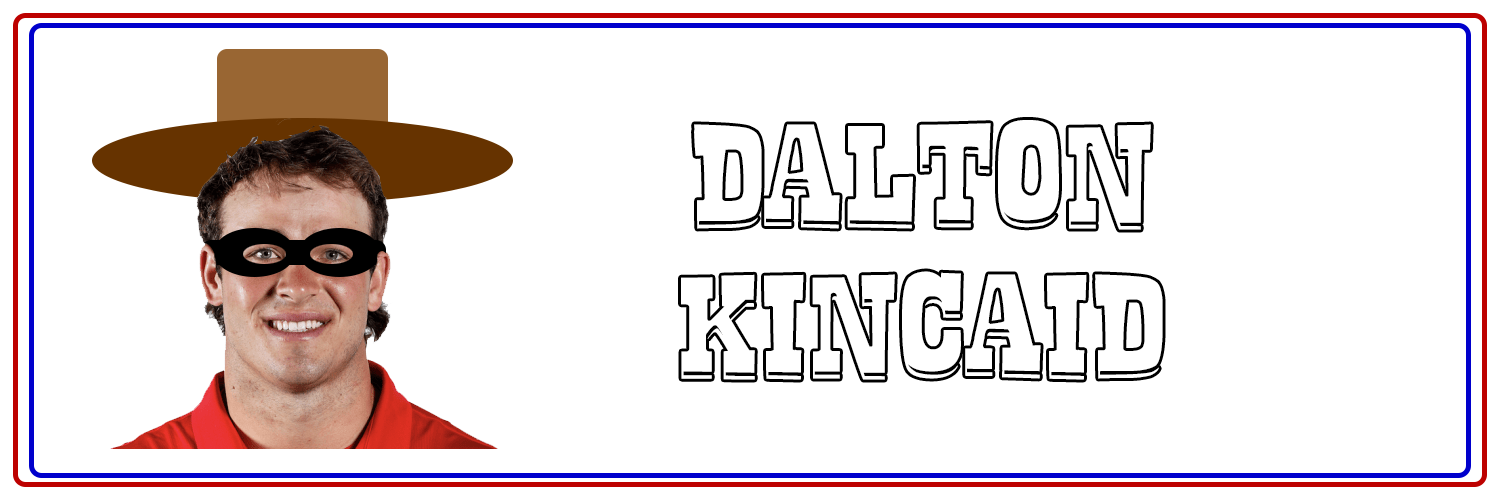
Dalton Kincaid — Buffalo Bills, TE
The Ringer's Danny Kelly compared Dalton Kincaid's college tape to none other than Travis Kelce. (No pressure, Dalton!)
Kelce has annihilated the Bills over the past several seasons, so to be able to move up and draft their own version—a newer, younger model—seems like a sound strategy for the ongoing Mahomes v. Allen wars.
But what I want to know is: Does Kincaid play Catan?
Nothing like stopping a game of @Catan because your contract extension was finished. 😅@JoshAllenQB | @KimPegula | @MadGlab
— Buffalo Bills (@BuffaloBills) September 11, 2021
Back in the summer of 2021, Josh Allen was playing Catan with Dawson Knox and a few other Bills in the tight-end room when word of Allen's contract extension leaked online.
Knox, who signed his own lucrative contract extension last season, broke the news to the group and, presumably, everyone was happy for a few seconds before they got back to duking it out in their quest for Victory Points. (Knox is one of Allen's better friends, on and off the field.)
Unfortunately, that fateful Catan crew is crumbling. Tommy Sweeney now plays for the Giants. Tanner Gentry, Josh Allen's longtime best friend (dating back to their Wyoming days), recently left Buffalo for Canada to sign with the Toronto Argonauts.
By the Bandit's count, there are two empty seats around the Catan table—and the game typically calls for three to four players for optimal, elite Catan-ery. Can Kincaid fill the void and get invited to their next game?
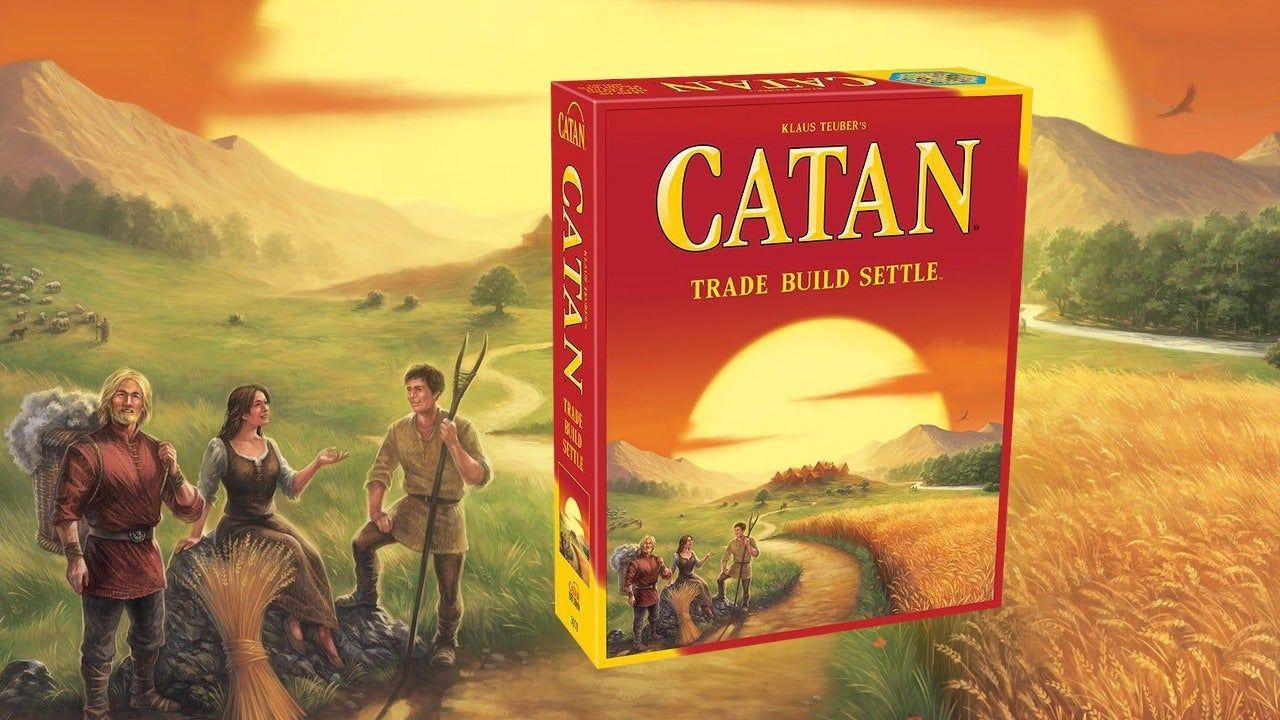
Catan or No Catan, as far as fantasy football is concerned, longtime Bandit acolytes know what I'm about to say next, but it bears repeating: Sean McDermott brings rookies along slowly, regardless of position or draft capital.
Remember when James Cook was pushed into the late first round of 2022 rookie drafts and then he didn't do much until November? That's par for the course with McDermott—a very loyal, old-school coach in terms of delegating playing time to veterans and guys who have already put in the work at One Bills Drive.
So please, I'm begging you: if you plan on drafting Dalton Kincaid in the first round of your tight-end premium rookie drafts, please be patient. Dawson Knox will still have fantasy utility. There's a chance Khalil Shakir is more valuable than Kincaid in terms of fantasy production for much of the 2023 season.
All that being said, Kincaid profiles as the Big Slot in Ken Dorsey's pass-first Buffalo offense and should be fine–to above-average–to quite good in tight-end premium for the duration of his rookie deal.
The tight-end designation will likely end up hurting Kincaid's bank account if the Bills exercise his fifth-year option. If he were listed as a wide receiver he would earn considerably more in 2027.
Here's how the fifth-year options for first-round WRs and TEs from the 2020 Draft Class shake out:
- Wide Receiver: anywhere from $12,987,000 to $19,743,000 dependent on hitting certain benchmarks (playing time, making the Pro Bowl, etc.)
- Tight End: anywhere from $6,567,000 to $11,345,000 dependent on hitting certain benchmarks (playing time, making the Pro Bowl, etc.)
It pays to be designated as a receiver, Dalton!
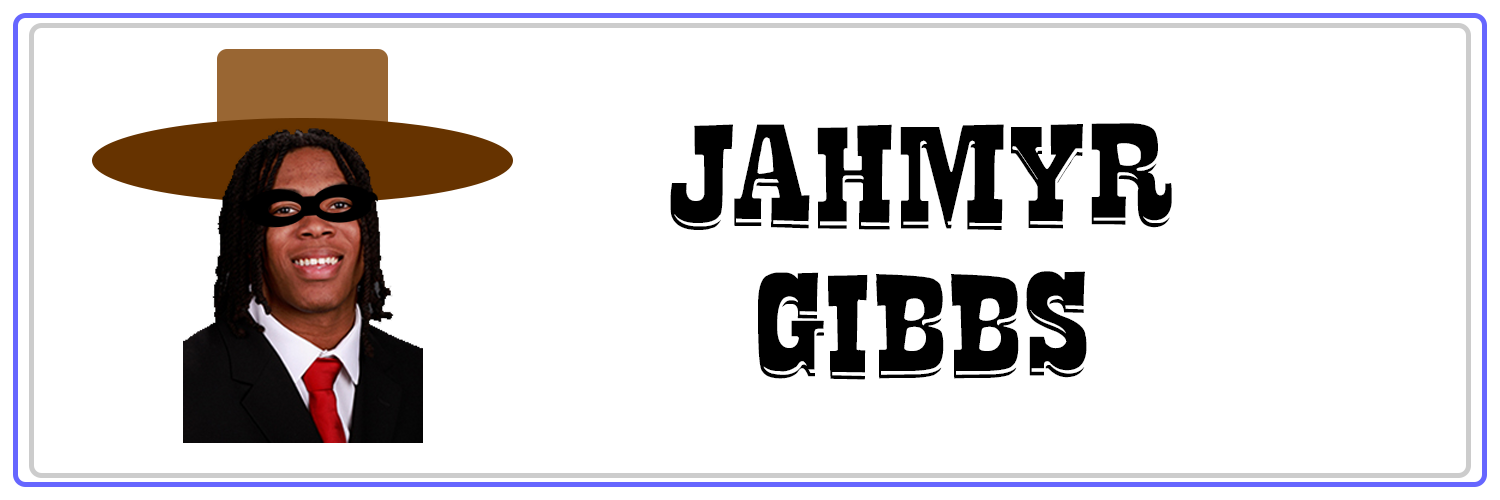
Jahmyr Gibbs — Detroit Lions, RB
The signs were there in last year's Hard Knocks. Former Lions and current Carolina Panthers RB coach Duce Staley was frustrated with D'Andre Swift seemingly every time they shared the screen. The source of Staley's ire? Swift just didn't seem to "have that dawg in him."
"He the type of coach that's going to push me to my limits, and that's the type of coach that I need. I look forward to it." —D'Andre Swift
Swift now plays for the Eagles, where he will play for running backs coach Jemal Singleton who has been with Philadelphia since HC Nick Sirianni was hired in 2021. Prior to this stint with the Eagles, Singleton coached up Joe Mixon for the Bengals ('19-'20) and Jalen Richard for the Raiders in 2018—who "saw an increased role" and brought in 68 receptions that season.
Swift was sent to Philly for a 2025 4th-Round pick and a late swap this past weekend. The move came less than two days after Detroit selected Jahmyr Gibbs in the 1st Round, 12th overall, which came as a shock to many in the fantasy realm.
But not Emory Hunt! The CBS Sports analyst and founder of the Football Gameplan had Gibbs as his No. 1 running back in his 2023 Draft Prospect Guide. The strengths he lists are plentiful:
- "Elite-level vision. There's not a cutback lane or open gap Jahmyr doesn't see, and subsequently find."
- "He's always one carry away from a house call."
- "Gibbs could be a stellar slot receiver if he wanted to be. Excellent receiver at all levels [of the field]."
Sounds like a player the Lions need after losing Jameson Williams to a six-game suspension! Here's what Dane Brugler had to say about Gibbs in The Beast:
- "Quick as a hiccup and makes impressive full-speed cuts"
- Lined up in the slot or outside on 26.4% of passing snaps in 2022
- Described as a "humble competitor" and "not an attention seeker"
The knock on Gibbs—like many skill players in this draft—is his size, or perceived lack thereof. Weighing it at 199 lbs. just simply isn't 200 lbs., folks, and there's nothing that can be done about that.
For an idea of how the Lions may use Gibbs in Ben Johnson's offense, I turned to a reliable source: Ted Nguyen's voluminous Athletic archive. Last September, he published an article titled, "Why the Lions' old-school offense is the antidote to modern NFL defenses."
"A lot of their passing game comes from McVay...because it's what Jared Goff knows....The Lions' running game, however, is one of the most diverse attacks in the league."
"The Lions like to run right into the teeth of defenses with authority. They want their offensive line, one of the best in the league, firing off vertically and punishing defenders."
That last quote may cause some concern with a smaller back, but just know that they were committed to using Swift in this system—running into the teeth of the defense—and they will likely do the same with Gibbs.
"The versatility of the Lions' skill players is similar to what the Rams had when they had Cooper Kupp, Robert Woods, and Todd Gurley at full health. Their receivers all block with great effort, they can run the whole route tree, and they are threats running the ball on fly sweeps."
Imagine what the offense will look like when the Sun God, Jamo, and Gibbs are all active on game day? Sammy LaPorts mixing in? It's going to be a fun season in MoTown, baby!
Rather than copy-pasting more quotes from Nguyen's piece and risking legal action, I suggest you subscribe to The Athletic and bookmark that bad boy.
One last quote about the 2023 Lions, courtesy of offensive coordinator Ben Johnson in conversation with Tim Twentyman:
"We'll move Jamo all around. He'll be all over the place for us."
"I know this, when you get speed in the slot, that's very hard to defend for a defense. So there'll be times we do that, there'll be times he's X. He'll be Z, but there's a lot he can do."
Like I said, it's going to be a fun season in MoTown, baybeeeeeeeee! Go out and trade for pieces of the Lions offense rightfuckingnow. (Goff and David Montgomery are probably the most attainable.)
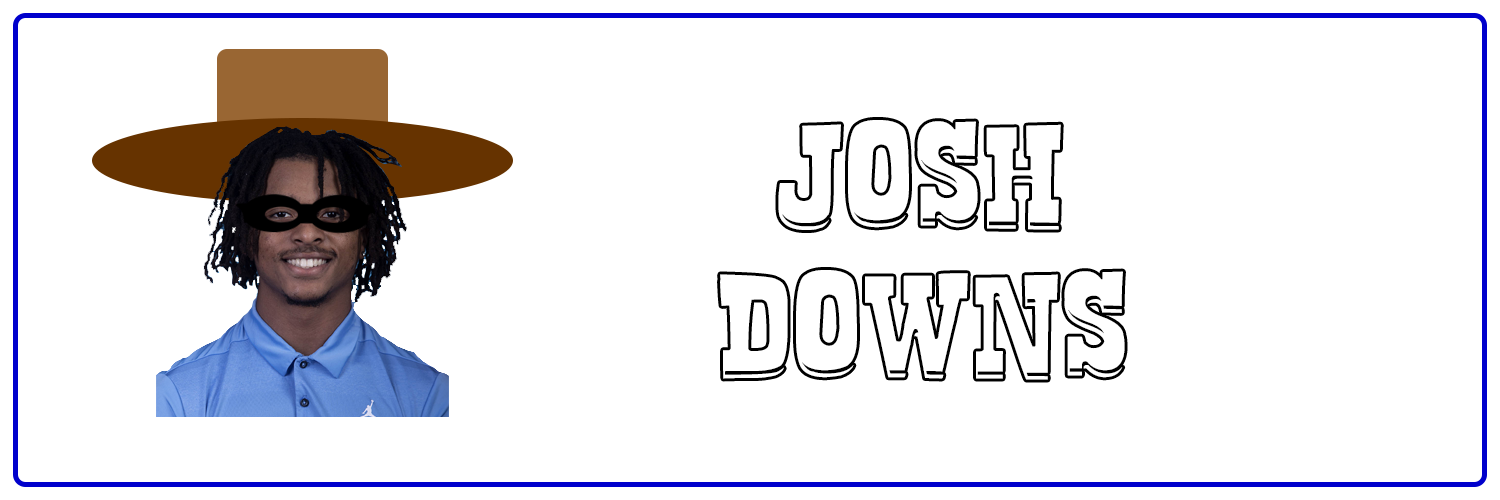
Josh Downs — Indianapolis Colts, WR
This is perhaps my favorite dynasty landing spot for a receiver in the entire draft. Josh Downs was insanely productive in college, putting up 195 receptions, nearly 2,500 yards, and 19 touchdowns the past two seasons, garnering back-to-back First Team All-ACC accolades.
He slots in as the No. 3 receiver for the Colts behind traditional WR1 Michael Pittman and field-stretching WR2 Alec Pierce. With rookie QB Anthony Richardson set to start games (at some point) during the 2023 season, this line in Brugler's Beast really sticks out to me, as one of Downs' most relevant strengths in an A-Rich offense:
- "Does a great job finding holes in the defense, especially on scramble plays"
Can you guess the biggest knock on Downs? Well, he measured in at 5'8" and weighed 171 lbs. at the Combine, but you know who has experience working with slight receivers who absolutely dominated in college? Colts HC Shane Steichen, who called the offense in Philly last year en route to DeVonta Smith's WR9 PPR finish. Smitty, in case you were wondering, weighed in at 170 lbs. at the Combine back in 2021.
Two other nits I want to pick with Brugler's evaluation before moving on:
- "[Downs is] surprisingly efficient with crowded catch points"
- "Didn't see much press coverage in college, and free releases won't be as common in the NFL"
These are two dings I hope to disprove later this spring and summer in future posts and shows, but if you'd like to do a little homework and increase your BanditVision™️ in the meantime, I'd suggest reading these articles that have planted a seed in my mind that smaller WRs will continue to dominate in the NFL, thanks to the rise in 7-on-7 tournaments and creative playcalling that allows slot-types to get a free releases on plenty of routes each game.
- "The New Wave": 7-on-7 football is fast-paced, unregulated and growing in popularity. But critics — including many high school coaches — see a game vulnerable to the same problems facing AAU basketball. (The Washington Post, published June 11, 2018)
- "How Justin Jefferson, other top receivers are becoming NFL's new workhorse backs" (The Athletic, published Sept. 14, 2022)
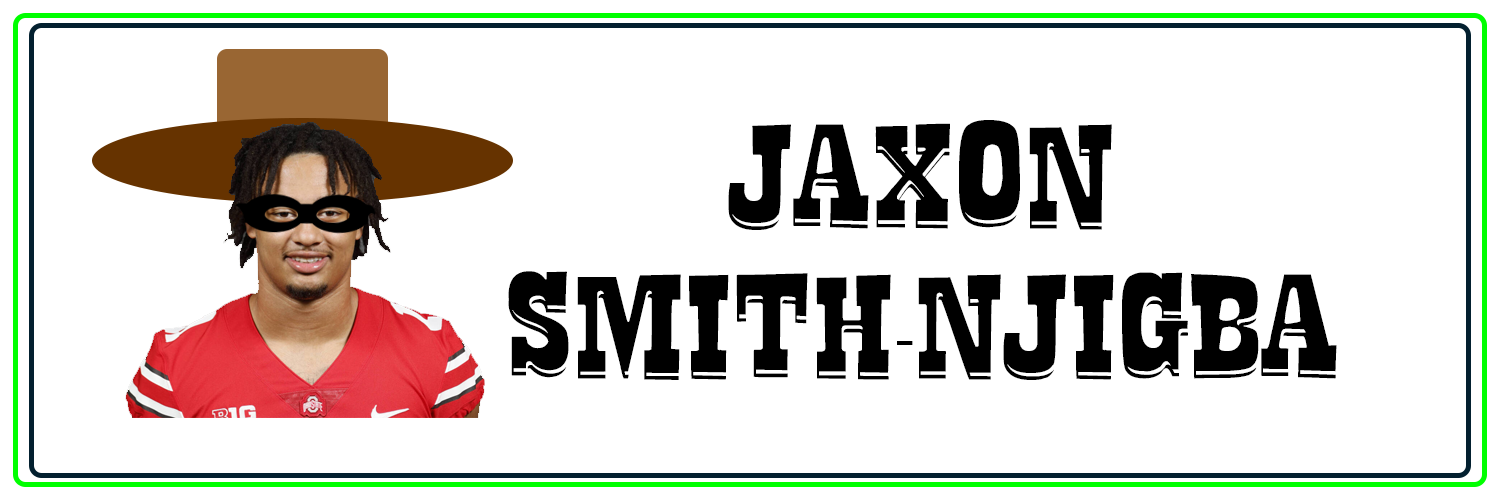
Jaxon Smith-Njigba — Seattle Seahawks, WR
Fantasy Football Twitter has had it with the Seattle Seahawks. How dare they draft Zach Charbonnet in the second round when they have a perfectly good Ken Walker at home? Why in the world would they disrupt the Eden-like target distribution of DK Metcalf and Tyler Lockett by drafting the first wide receiver off the board?
Well, Fantasy Football Twitter, what if I were to tell you that these picks actually help Ken Walker and DK Metcalf and Tyler Lockett? Would you believe me? Would you spit in my face?
To the numbers!
Jaxon Smith-Njigba paced Ohio State WRs with 80 receptions in 2021, despite seeing fewer targets than Garrett Wilson and Chris Olave. While G Willy and Olave feasted out wide, JSN ran 90% of his routes from the slot and had an average depth of target (aDoT) of 8.8 yards (vs. 11.6 for Wilson, 14.7 for Olave) and was a YAC demon on many of those receptions, averaging 7.6 yards after the catch (vs. 6.0 for Wilson, 4.2 for Olave).
Geno Smith led the league with an absurd 99.3 passing grade on deep balls in 2022, more than 4 points better than Tom Brady and Joe Burrow. This aligns with the Russell Wilson Seahawks' best marks in recent years, where Wilson finished Top 5 in the metric from 2018-2020, otherwise known as years played with Tyler Lockett. (Lockett has consistently been in the Top 10 of deep-ball reception percentage during this timespan; he was No. 4 in 2022 and No. 1 in 2021.)
C.J. Stroud was Top 15 among Power 5 quarterbacks in the same metric, back in 2021, with a 93.2 deep-ball grade*. Olave ranked 10th among Power 5 wideouts in deep-ball prowess that same season, with a 97.9 grade.
Garrett Wilson ranked No. 8 among Power 5 receivers in the intermediate game, hauling in 65.6% of his 32 targets back in 2021. Toggling back to the 2022 Seahawks, DK Metcalf ranked 4th in total intermediate targets, earning 52.
And now, for the short-area targets, where we expect JSN will feast with the Seahawks. In 2022, DK and Lockett put up near-identical stats in the short game: 48 receptions each, averaging around 8.3 yards per, gaining a couple yards after the catch, and seeing their targets roughly 6 yards downfield.
Back in 2021, JSN ranked 4th among Power 5 receivers in the short-area game, catching 40 balls (on 47 targets) on an aDoT of a little over 5 yards. He was able to YAC those receptions into an additional 7 yards, on average, and gained roughly 13 yards per reception in the short game, which was best among P5 talents. (Josh Downs wasn't far behind at No. 2, with 12.7 yards per reception.)
JSN's elite YAC ability on these short-area targets might be rooted in some of the testing metrics gathered at the Combine, specifically his performance in the 3-Cone Drill (6.57 seconds) and Short Shuttle (3.93 seconds)—both of which were tops among all participants.
I heard NBC Sports's Connor Rogers talk about a possible comp to JSN on this Monday's Rotoworld Football Show—and the Relative Athletic Score comparison surely backs it up.
Take a look at those 3-Cone and Shuttle times!

One last thing to note that may, in fact, be relevant to JSN's slot prospects, and then I'll get to the next freshman.
A few weeks back, Alec Lewis published an article in The Athletic titled, "How biometric data proved Vikings' Justin Jefferson was a unicorn: 'Holy ... he is off the charts'."
The guy who said, "Holy shit, he is off the charts"? You guessed it, Bandit favorite Brandon Ally of S2 Cognition.
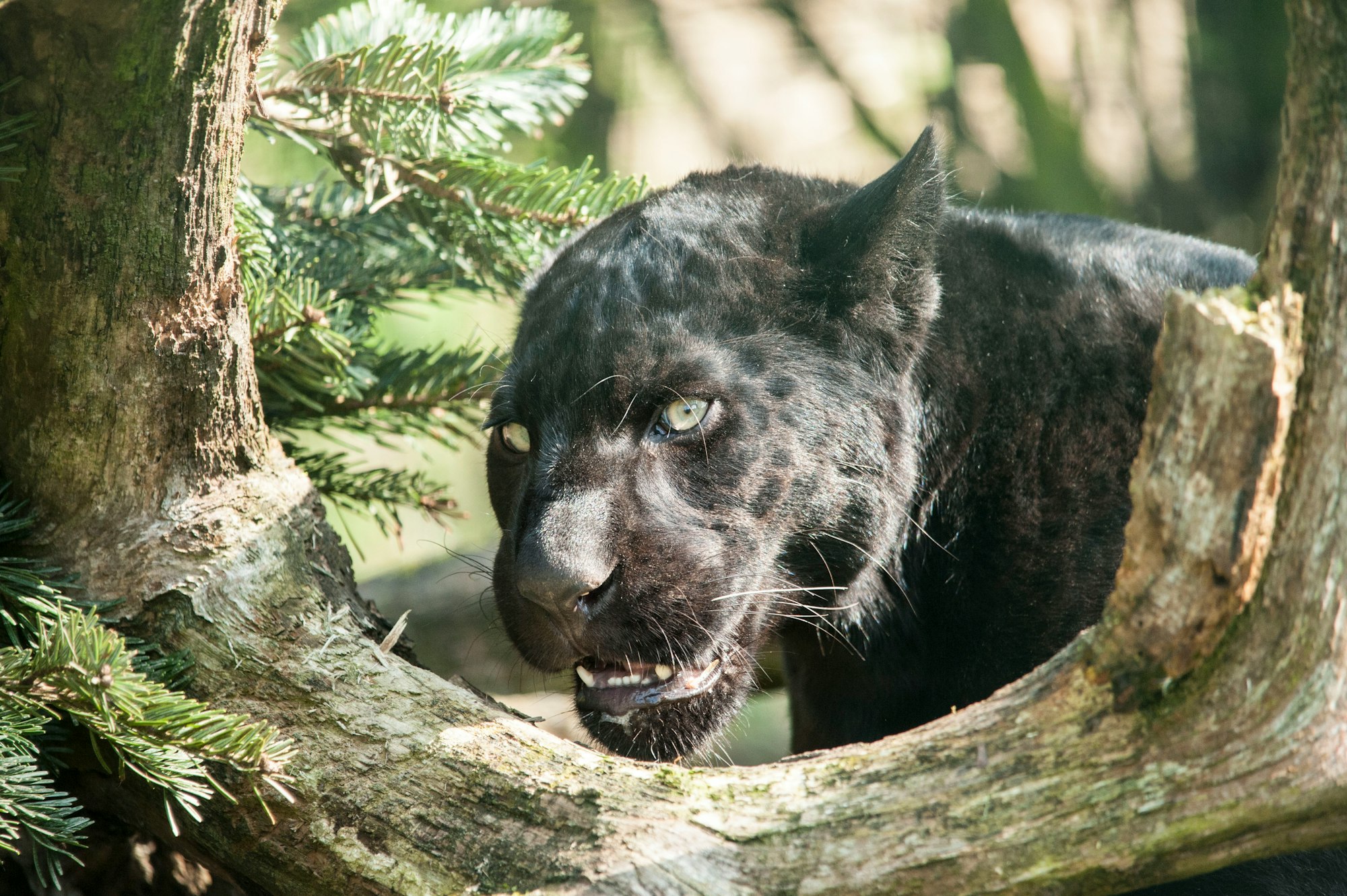
Justin Jefferson scored in the 91st percentile on the S2 Cognition test and particularly well in three categories that translate to NFL WR success: 1) search efficiency 2) decision complexity 3) improvisation.
Jack Marucci, LSU's longtime athletic trainer, suspected Jefferson's prowess would show up in the S2 test, but he still wanted to run another one—a simple test that required a pair of $14,000 glasses.
Those glasses use two cameras to record "the expansion of the wearer's pupils and the sequencing of his eyes" in real time.
"Elite athletes," Ally said, "tend to have minimal degrees of eye dominance, meaning both eyes absorb information for the brain to process".... Marucci said Jefferson has the ability to change his eye dominance depending on the type and direction of the route he is running."
The findings from these two tests that exhibited JJettas dominance? Well, they just so happened to solidify the LSU coaches' decision to keep Jefferson in the slot.
Where in the formation do we expect JSN to line up most—if not all—the time with the Seahawks? Let's fucking goooooooooo!!!!!!
*Kenny Pickett was third among Power 5 QBs in PFF deep-ball grade, back in 2021; Bryce Young was 7th. Jordan Addison was tied for first in deep-ball WR grade in 2021, Jameson Williams was 7th.

Darnell Washington — Pittsburgh Steelers, TE
The Steelers absolutely crushed the draft, fortifying their biggest weakness from the past few seasons: the offensive line.
Big Ben was able to overcome this issue, to some extent, because he got rid of the ball faster than basically any quarterback in the modern era. Kenny Pickett he was not.
With less than 2.5 seconds to throw, Pickett was 6th worst among NFL starters in getting sacked when facing defensive pressures. When given more than 2.5 seconds to throw, he was 10th best in the same metric.
The additions of Georgia mammoths Broderick Jones and Darnell Washington should vastly improve these numbers and allow Pickett and the Steelers offense to take a jump in his second year at the helm.
Jones projects to be a decade-long starter and has sustained his prospect profile since high school, when he was the No. 2 tackle in the class behind Paris Johnson Jr., and Washington has been touted as a "6th offensive linemen" by basically every scout, front-office person, and pundit in the entire NFL orbit during this entire draft process.
While I'm not crazy about Darnell Washington's prospects as a fantasy TE in redraft or dynasty, given his extremely valuable utility as an additional lineman, I do think this bodes well for the rest of the Steelers offensive skill players, including Pickett, Najee Harris, George Pickens, and Pat Freiermuth.
And with any luck, if Pickett's able to stay upright behind that line more often than not when he has less time to throw, we may even see a resurgence of former Top 10 PPR demon Diontae Johnson.
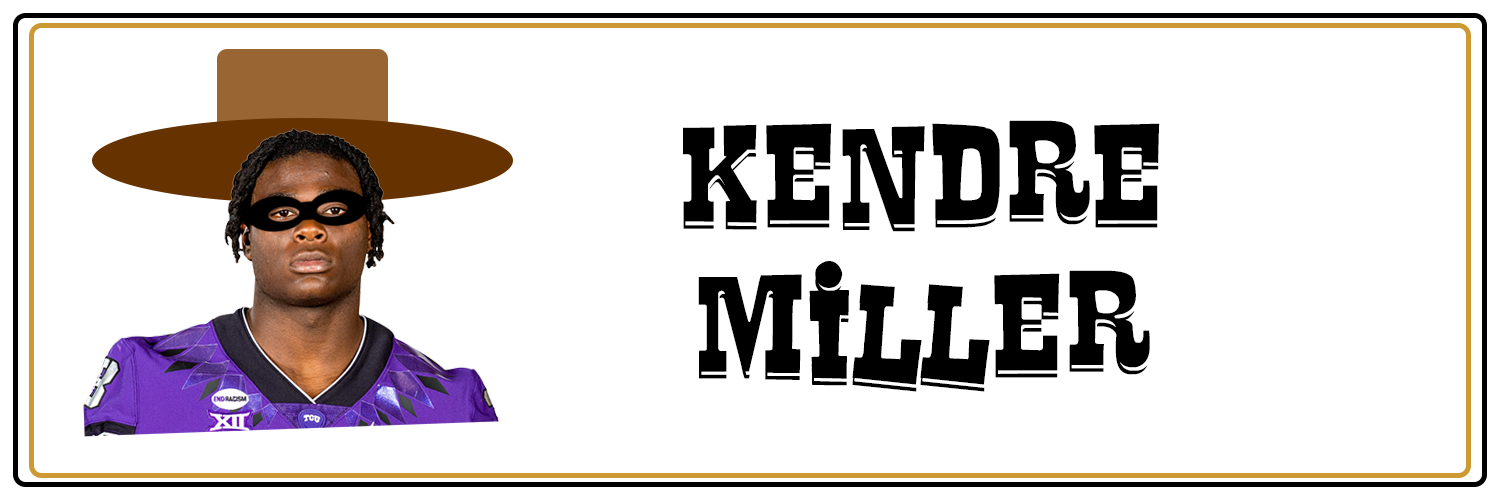
Kendre Miller — New Orleans Saints, RB
It really boils down to Alvin Kamara.
Kamara's next trial date for battery charges is Monday, July 31, ahead of Hall of Fame Weekend in Canton, Ohio.
While that seems like a ton of time for an NFL team to be in limbo—a team with a brand-new RB room—the Saints coaching staff is about as stable as it gets: HC Dennis Allen enters his 13th season with the team; OC Pete Carmichael has been in NoLa since 2006; RB coach Joel Thomas was hired in 2015.
For the duration of their tenure, the Saints have favored zone over gap schemes. Jamaal Williams was signed during the offseason after two seasons with the Lions who used him mostly in gaps. Before that, Williams was deployed in zone concepts with the Packers from 2017-20, and he had similar success in both systems—with one key difference: Williams was involved in the receiving game far more in Green Bay than he was in Detroit.
That could prove to be the biggest fantasy thorn in Kendre Miller's side if the season begins with Kamara suspended, leading to an early Williams-Miller backfield.
Miller split the TCU backfield with Zach Evans during their sophomore season and they put up similar statistics across the board across zone and gap schemes. The big takeaway from Miller and Evans time together was Miller's improvement in a few key metrics during in his sophomore year: 1) yards after contact per carry 2) pass blocking 3) elusive rating.
Miller had the lion's share of the backfield this past season, with Evans off to Ole Miss, and he put up Top 10 numbers nationwide in yards after contact per carry, breakaway runs of 15+ yards (on nearly 50% of his carries), and elusive rating.
The main concern I have with Miller as pertains to fantasy football revolves around his receiving profile.
Miller ran 167 routes this past season—on 80% of TCU's passing snaps—but was only able to generate 0.69 not-so-nice yards per route run. Here's how some of the other incoming freshmen compared:
- Evan Hull: 290 routes (85.8 % of passing snaps), gained 1.85 yards per route run (Y/RR)
- Bijan Robinson: 206 RTs (73.6%), 1.52 Y/RR
- Deuce Vaughn: 258 RTs (81.4%), 1.33 Y/RR
- Keaton Mitchell: 208 RTs (78.5%), 1.13 Y/RR
- Eric Gray: 230 RTs (81%), 1.03 Y/RR
- Tank Bigsby: 213 RTs (83.9%), 0.85 Y/RR
- Kendre Miller: 167 RTs (80.3%), 0.69 Y/RR
- Devon Achane: 297 (78.6%), 0.66 Y/RR
To be fair to Miller, TCU employed an Air Raid offense (4 WR, 1 RB, O TE) more than 40% of the time this past season—4th most in the country behind Mississippi State, Middle Tennessee, and Washington State—and that extremely spread-out offense hasn't worked as well in the NFL (as exhibited by Kliff Kingsbury's stint as Arizona Cardinals coach and playcaller).
Still, it isn't a great look for Miller's fantasy outlook in a more traditional Saints offense, particularly when pass blocking is factored into the equation.
Last season, Jamaal Williams earned a 72.3 PFF grade for pass blocking on 58 snaps. Alvin Kamara, meanwhile, was atrocious, earning a 20.2 grade on 49 snaps. Derek Carr's backfield mate last season, Josh Jacobs, earned a 56.3 grade on 85 pass-blocking snaps.
Jamaal has been one of the best pass-blocking running backs for years, consistently ranking in the Top 15 among RBs and finishing 1st in the metric back in 2019 with Green Bay.
All of this combines to muddy the fantasy outlook of the 71st overall pick in the draft. As things currently stand, Kendre seems slated to split the early down work with Jamaal playing the majority of 3rd down snaps—and that's if Alvin Kamara's suspended.
That's why Kamara's July 31st court date looms so large in terms of projecting the Saints backfield. Should Kamara be suspended for any stretch of time, it would not surprise me at all if the Saints brought in a veteran RB still waiting to be signed, like Leonard Fournette, which would really put a damper on Kendre Miller's 2023 fantasy outlook.
I ranked Miller as my dynasty rookie RB4 and 16th overall because I think he's a talented back that will enter the season at 21 years old, and there seems to be opportunity should Kamara face suspension.
If you're willing to chance it, or think you'll be able to trade Miller—perhaps during training camp (wait until the beat reporters start publishing puff pieces)—then I would still recommend drafting him in the middle of your 12-team SF rookie draft.
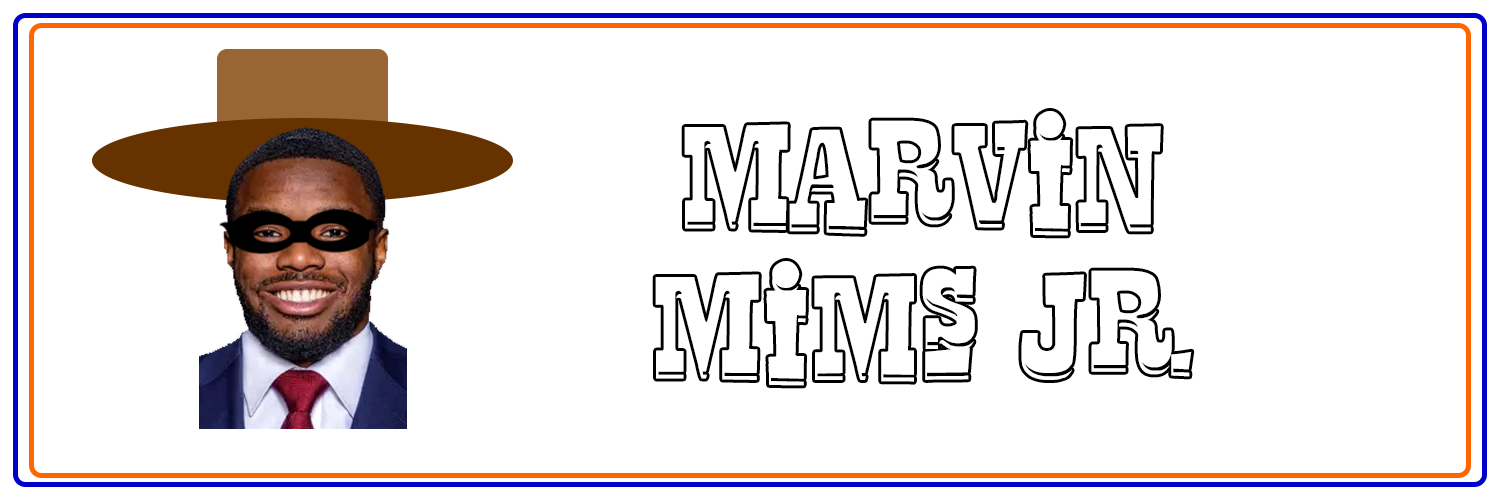
Marvin Mims Jr. — Denver Broncos, WR
With their first pick in the 2023 Draft, the Denver Broncos selected Marvin Mims, WR, Oklahoma, at No. 63 overall.
A few picks later they'd add LB Drew Sanders, and finish up their draft with CB Riley Moss, S JL Skinner, and C Alex Forsyth.
Only five picks!
That's what happens when you trade the farm for Russell Wilson one year and follow it up by trading a first for HC Sean Payton.
The fact that this new regime used their first pick on Marvin Mims, though, is extremely interesting after reports all offseason that Courtland Sutton and Jerry Jeudy were on the trade block. Hell, Sean Payton even through water on the fire of Greg Dulcich's breakout rookie campaign by saying some of the tight end's evaluation was "hard."
Matters are complicated further by Payton bringing in veteran QB Jarrett Stidham who started games for the Raiders last season when Las Vegas decided Derek Carr was not the QB of their new regime's future.
But let's say Payton's going to give Russell Wilson the ol' college try for at least the first few weeks of the season. Marvin Mims should give him the speedier deep-ball threat, à la Tyler Lockett, that helped convince he Broncos to trade for Russ in the first place.
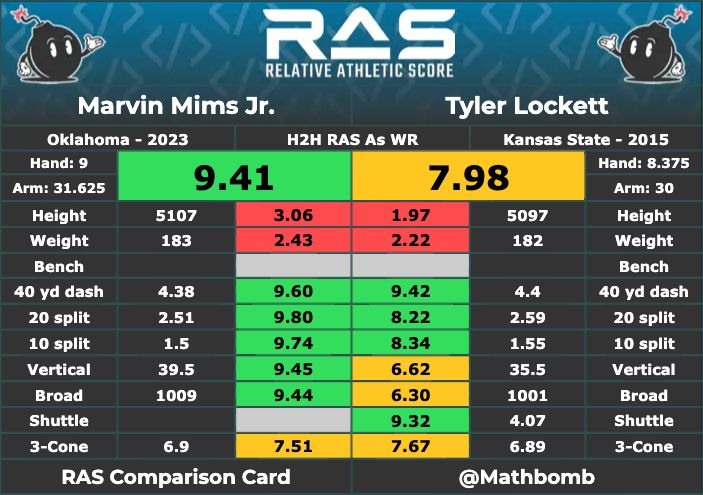
Marvin Mims has been absolutely elite in the ways that Lockett has dominated: crushing it in the deep-ball game.
During his freshman year at Oklahoma, playing for now-USC head coach Lincoln Riley and with now–Heisman-winning QB Caleb Williams, Mims had a better deep-route reception percentage and more yards per route run than Quentin Johnston, Jordan Addison, Jonathan Mingo, and Zay Flowers. Johnston bested him in yards after the catch per reception, but only by a single yard.
This past year at Oklahoma, playing for head coach Brent Venables and QB Dillon Gabriel, Mims bested the same group in yards after the catch on deep receptions, and earned a ridiculous 35.7% target share on deep routes (Mingo was the next highest at 31.6%, followed by Johnston at 24.4%).
Like Lockett, Mims falls into the middle-of-the-pack statistically when looking at stats geared toward the intermediate and short passing games. That's O.K., though, as Courtland Sutton (intermediate) and Jerry Jeudy (short) should be able to chew up those targets in the 2023 Broncos attack.
Before moving on to the next freshman, I wanted to see if Sean Payton's Saints teams had a player that could comp to Mims, back before Drew Brees turned into a dink-and-dump point guard.
Around 2009, the Saints started taking more deep shots with Devery Henderson and Robert Meachem doing most of the damage downfield, with a little Marques Colston on the side. This trio would see the bulk of deep targets until around 2013-14 when Lance Moore and Kenny Stills joined the picture. But thinks really took off in 2015, during Brandin Cooks' second year in the league.
Cooks had 32 deep targets that year, hauling in 40.6% of them and averaing 8.7 yards after the catch. These deep shots were coming roughly 30 yards downfield, and they resulted in 6 touchdowns (a number Mims hit in 2020 and 2020 on deep shots at Oklahoma).
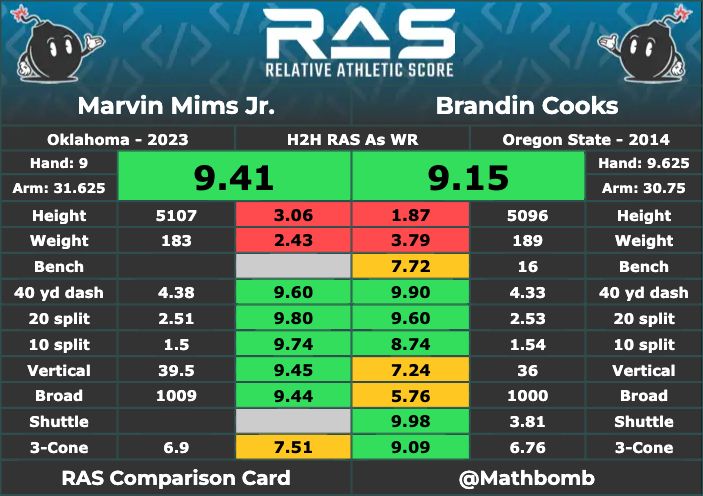
Mims was my WR5 until Jonathan Mingo went 39th overall to the Panthers. If the Broncos are able to turn it around and Russ can get back to his former deep-ball slinging ways, Mims could easily end up one of the best fantasy players in this rookie draft class.

